Pronunciation of casual spoken Czech:
A quantitative survey
David Lukeš
Zuzana Komrsková
Marie Kopřivová
Petra Poukarová
Slavicorp 2018 | September 25th, 2018
Introduction
Overview
Point of departure
We have a new corpus of casual spoken Czech with manual phonetic transcription → ORTOFON v1
Goals
- Here’s some cool stuff you can do with it.
- And by you, I mean you! 👉 😱 👈
Resources
Google: korpus ortofon
This presentation: https://trnka.korpus.cz/~lukes/slides/slavicorp2018/ortofon
Our wiki: https://wiki.korpus.cz/doku.php/cnk:ortofon
KonText query interface: https://kontext.korpus.cz/first_form?corpname=ortofon_v1
All the data via LINDAT:
- ELAN transcripts + audio: http://hdl.handle.net/11234/1-2579
- vertical: http://hdl.handle.net/11234/1-2580
Corpora of spoken Czech at the CNC I
| corpus | size | tagging | time span |
|---|---|---|---|
| ORTOFON | 1M | ✓ | 2012–2017 |
| ORAL | 5.4M | ✓ | 2002–2011 |
| ↳ ORAL2013 | 2.8M | ✗ | 2008–2011 |
| ↳ ORAL2008 | 1M | ✗ | 2002–2007 |
| ↳ ORAL2006 | 1M | ✗ | 2002–2006 |
| BMK | 490k | ✗ | 1994–1999 |
| PMK | 675k | ✗ | 1988–1996 |
Corpora of spoken Czech at the CNC II
| corpus | size | tagging | time span |
|---|---|---|---|
| DIALEKT | 100k | ✓ | 1957–2015 |
| LINDSEI_CZ | 120k | ✗ | 2012–2015 |
| SCHOLA2010 | 790k | ✗ | 2005–2008 |
About ORTOFON v1
Geographically
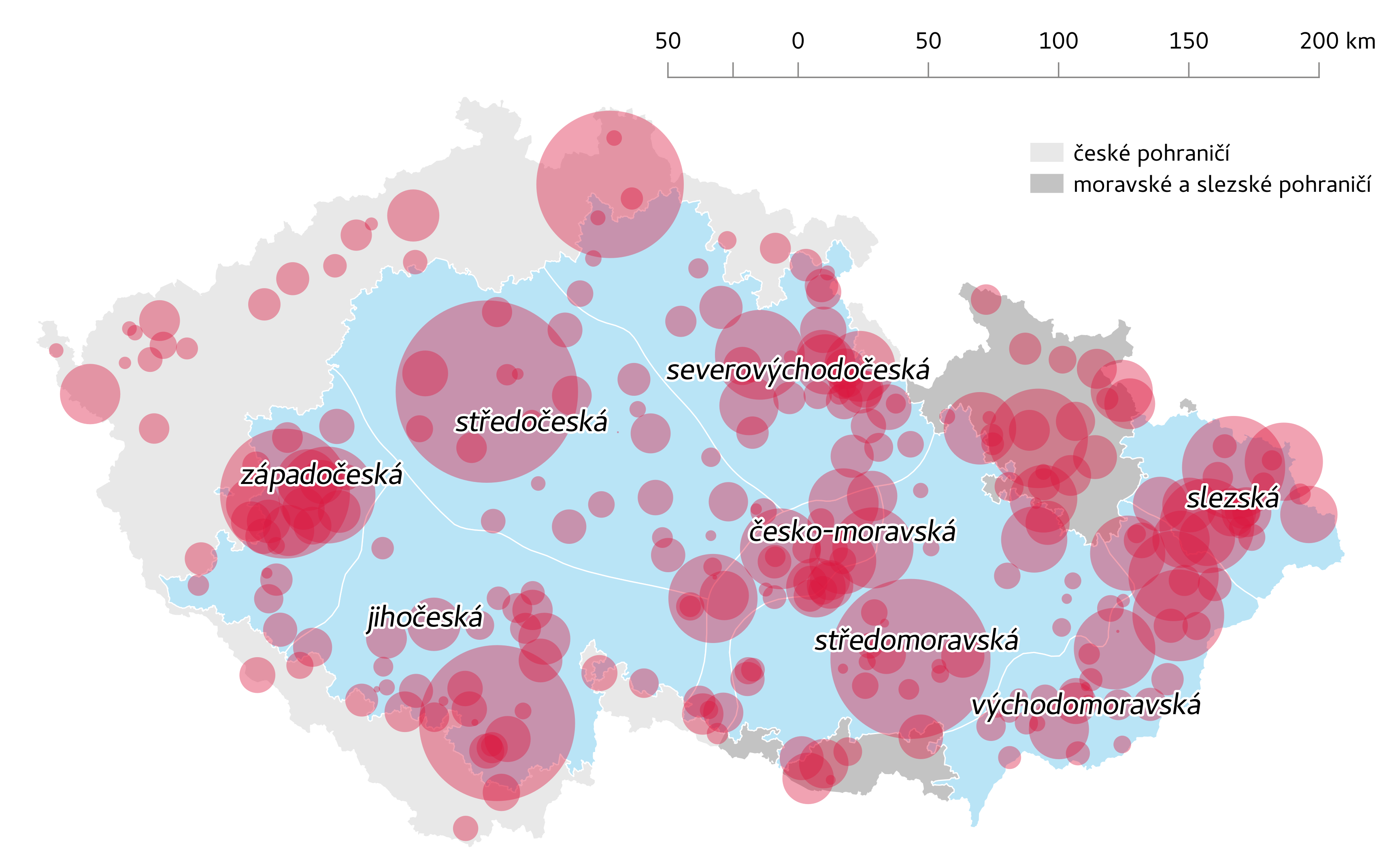
Some figures
| # of … | |
|---|---|
| … tokens | 1,236,508 |
| … tokens without puctuation, hesitations and interjections | 1,014,786 |
| … different word forms | 65,294 |
| … conversations recorded | 332 |
| … unique speakers | 624 |
| → length of recordings [hh:mm:ss.ms] | 102:41:14.247 |
Per-document metadata
- 12 pre-defined situation types
- year, month and location of recording
- relationship between speakers in recording
- gender mix of speakers in recording
- generation mix of speakers in recording
- … and more.
Per-speaker metadata: balancing
On the basis of the following metadata:
- gender: male × female
- age: under 35 × over 35
- education: tertiary × other
- childhood dialect region of residence: 10 regions
Resulting number of categories: \(2 \times 2 \times 2 \times 10 = 80\)
Ideally: equal representation of these 80 categories, at least 5 speakers per category.
→ Target number of words per category: \(\frac{1\ 000\ 000}{80} = 12\ 500\)
Transcribed using ELAN
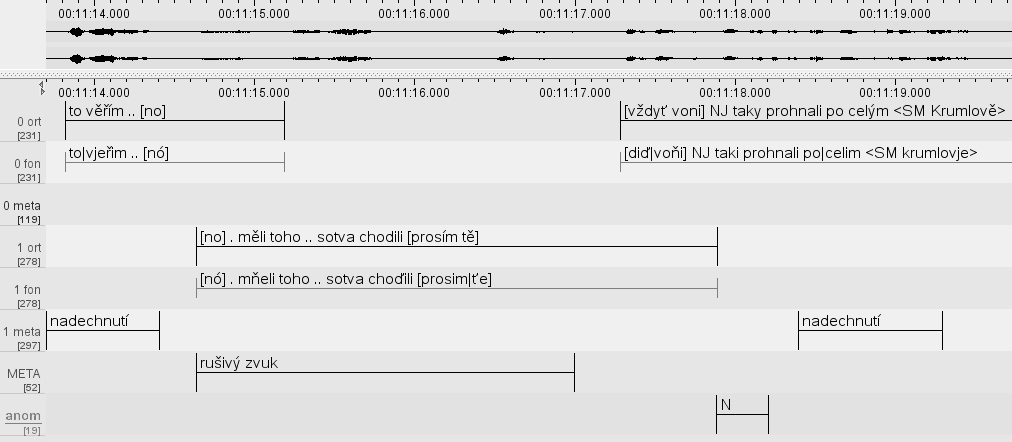
Accessible via KonText (but also LINDAT)
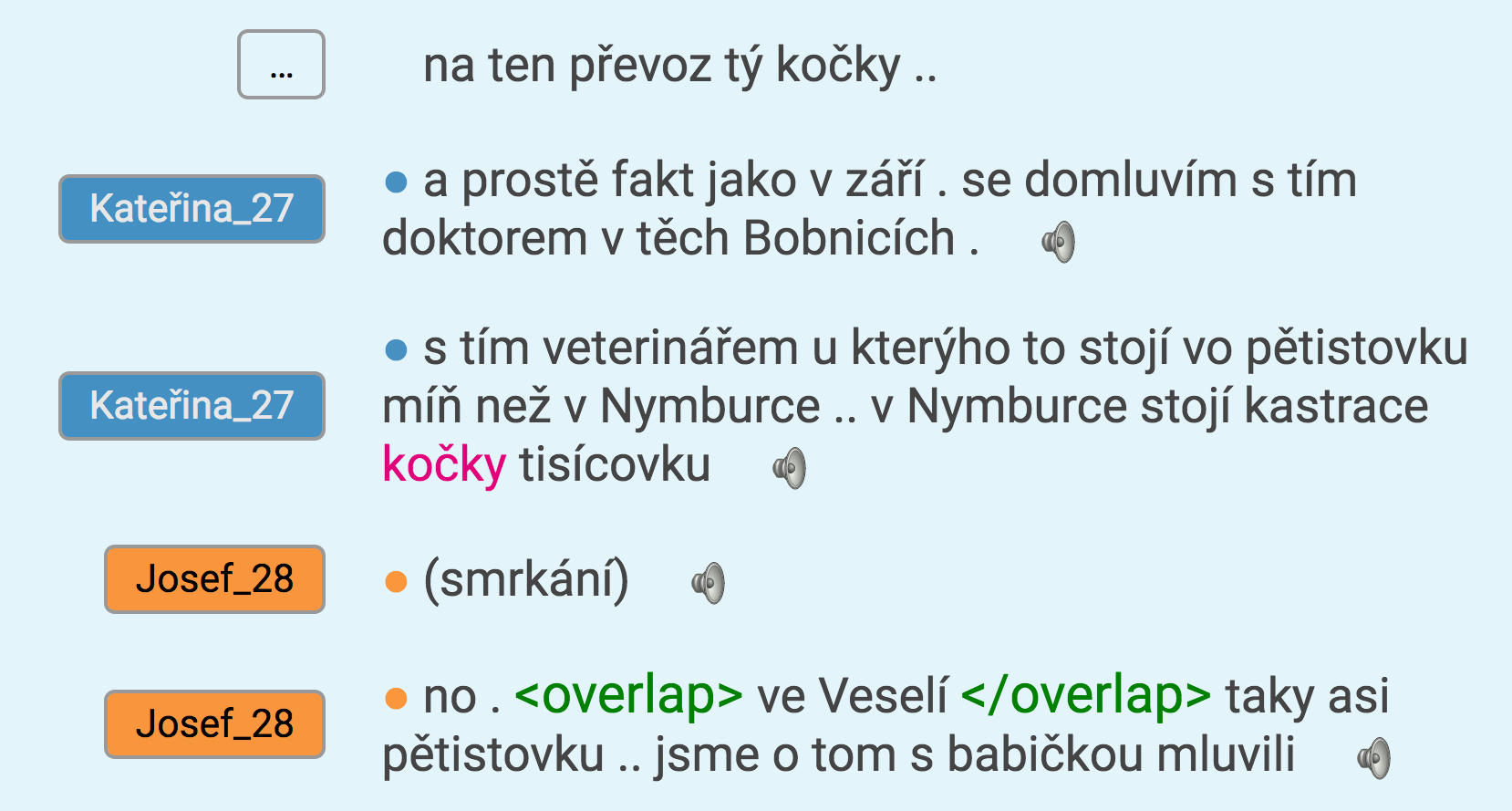
Phonetic transcription
- simplified phonetic transcription
- use regular Czech alphabet graphemes as much as possible
- no phonetic diacritics
- stress group boundaries
- aligned with basic transcript: tokens match \(1:1\)
Case studies
Assimilation of voicing in Czech
final devoicing:
<hrad (nom.), hradu (gen.)> → [hrat, hradu]
regressive / anticipatory assimilation of voicing, even across word boundaries:
<hrad, hrad byl> → [hrat, hrad bil]
- triggered by voiced obstruents
in Moravia/Silesia (Eastern part of the country), also triggered by sonorants [r, l, m, n, j…]:
<tak jako> → [tag jako]
Traditional dialect regions
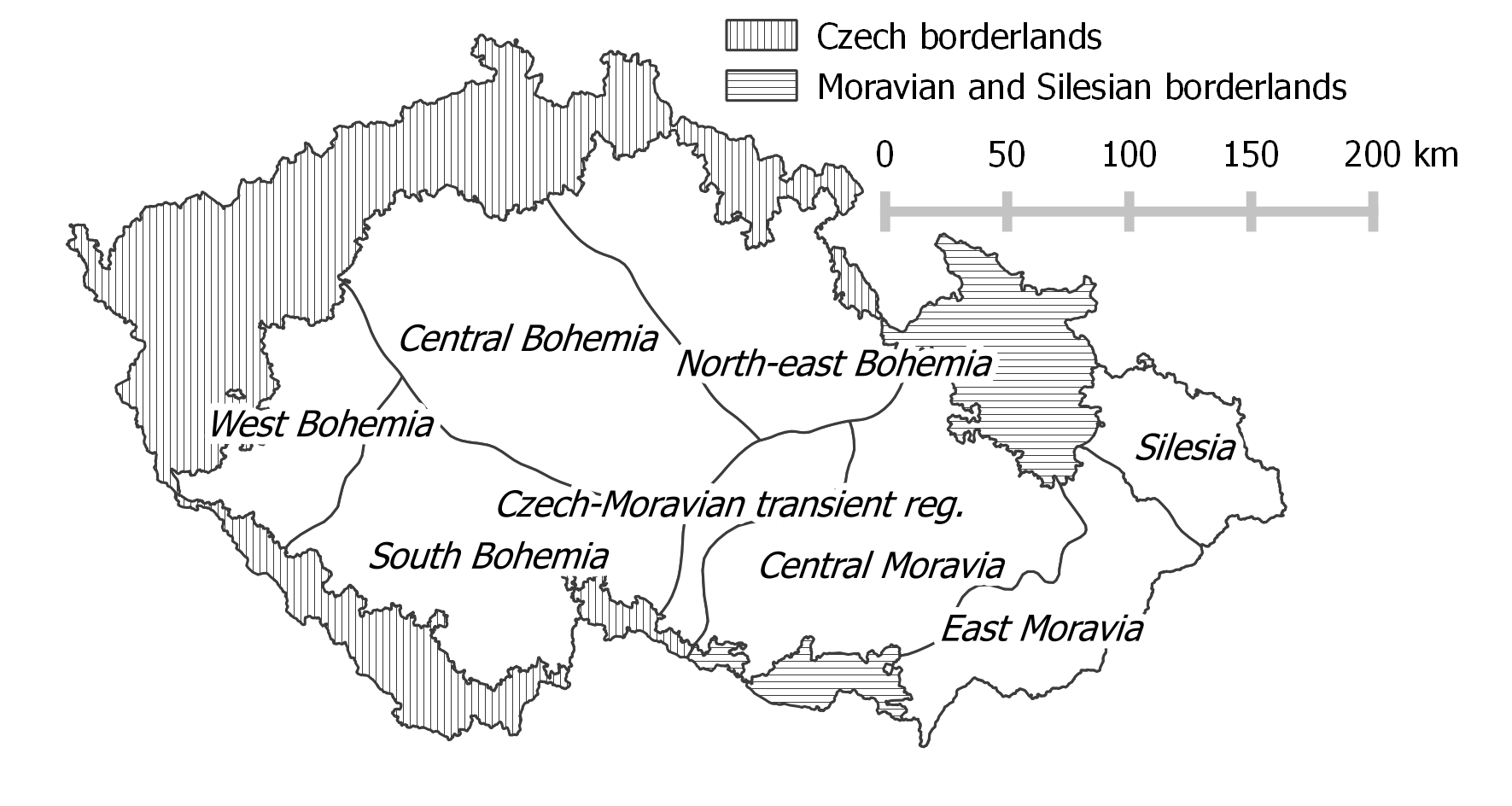
Assimilation of voicing ~ Region of childhood residence

Which forms assimilate to sonorants?
“Bohemia”
| WORD | FREQ |
|---|---|
| tak | 651 |
| bych | 348 |
| už | 239 |
| těch | 224 |
| když | 193 |
| teď | 186 |
| vod | 184 |
| jak | 169 |
| vůbec | 127 |
| pak | 122 |
“Moravia”
| WORD | FREQ |
|---|---|
| tak | 1288 |
| už | 483 |
| jak | 345 |
| když | 267 |
| teď | 190 |
| fakt | 181 |
| vůbec | 162 |
| víš | 155 |
| bych | 153 |
| pak | 145 |
# of variants ~ Frequency (\(\rho = 0.76\))

In KonText: protože
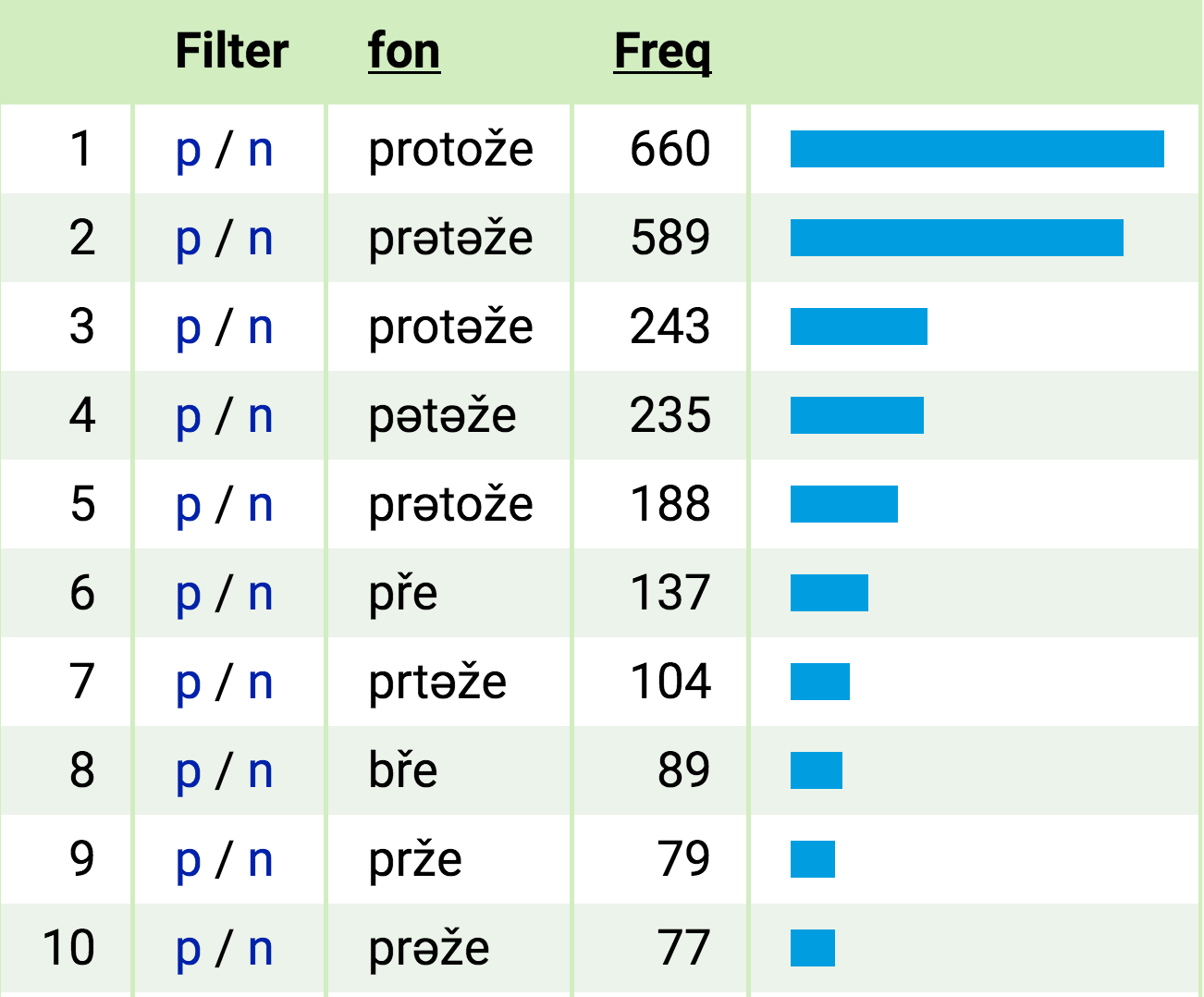
In KonText: samozřejmě
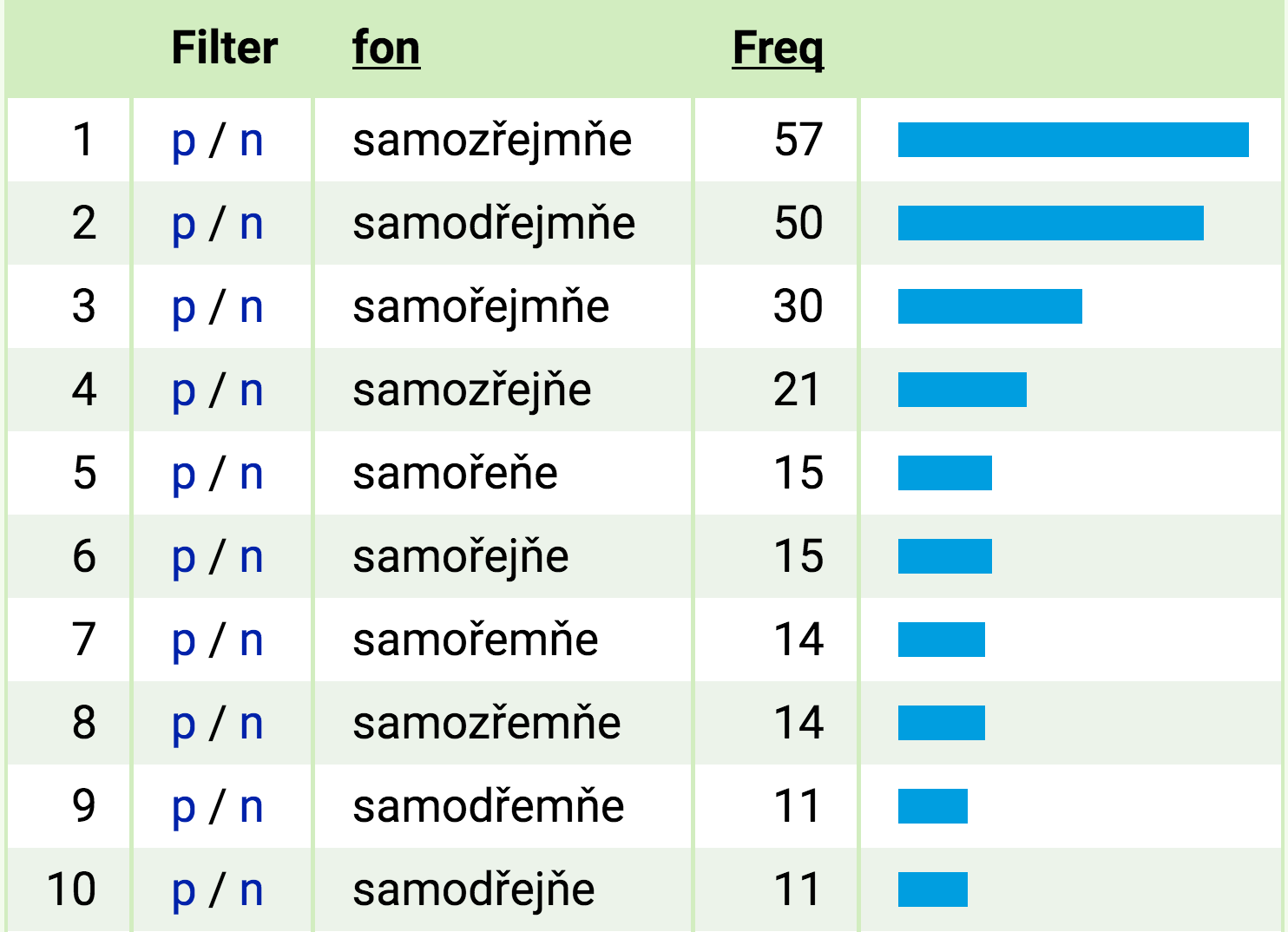
In KonText: normálně
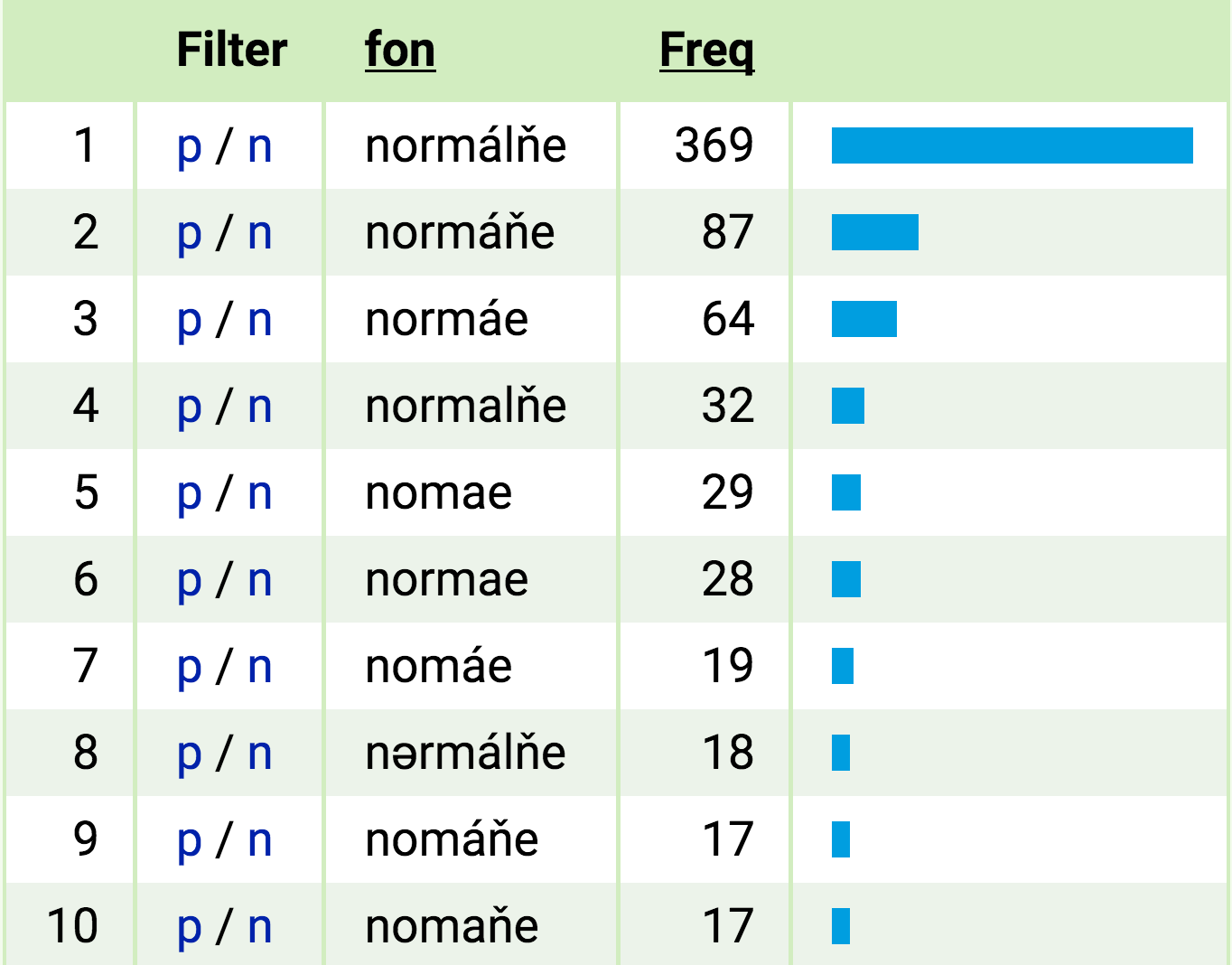
Identify competition with entropy
| WORD | ENTROPY | |
|---|---|---|
| 1 | ježišmarja | 3.803729 |
| 2 | samozřejmě | 3.717063 |
| 3 | protože | 3.603883 |
| 4 | sedmdesát | 3.127680 |
| 5 | takovýhle | 3.110014 |
| 6 | sedmnáct | 3.096503 |
| 7 | člověk | 3.037660 |
| 8 | ježíšmarjá | 2.947005 |
| 9 | šestnáct | 2.927707 |
| 10 | ježíš | 2.883297 |
| 11 | tohleto | 2.880382 |
| 12 | normálně | 2.843373 |
| 13 | povídám | 2.782390 |
| WORD | ENTROPY | |
|---|---|---|
| 14 | nějakého | 2.752697 |
| 15 | takového | 2.682409 |
| 16 | ježiš | 2.680650 |
| 17 | podívat | 2.678791 |
| 18 | tadyhle | 2.676441 |
| 19 | vůbec | 2.671444 |
| 20 | potřebovat | 2.637769 |
| 21 | čtyřicet | 2.619200 |
| 22 | myslíš | 2.586492 |
| 23 | přijít | 2.574731 |
| 24 | takovýho | 2.573642 |
| 25 | osmnáct | 2.565948 |
| 26 | ježíšmarja | 2.523211 |
Formally reduced pronunciations
- motivated by:
- frequency, length (across languages)
- lexical effects
- edit distance between
abcandzbc:- Levenshtein: 1
- normalized Levenshtein: 0.33
in practice, deletion and substitution (~ formal simplification) much more common than addition (epenthesis)
→ high normalized Levenshtein distance ~ high amount of simplification
Normalized Lev. dist. ~ Frequency

Instead of a conclusion…
Google: korpus ortofon
This presentation: https://trnka.korpus.cz/~lukes/slides/slavicorp2018/ortofon
Our wiki: https://wiki.korpus.cz/doku.php/cnk:ortofon
KonText query interface: https://kontext.korpus.cz/first_form?corpname=ortofon_v1
All the data via LINDAT:
- ELAN transcripts + audio: http://hdl.handle.net/11234/1-2579
- vertical: http://hdl.handle.net/11234/1-2580
Thank you for your attention!
Acknowledgments
This research was supported by the Czech National Corpus project (LM2015044) funded by the Ministry of Education, Youth and Sports of the Czech Republic within the framework of Large Research, Development and Innovation Infrastructures.
Slides: https://trnka.korpus.cz/~lukes/slides/slavicorp2018/ortofon